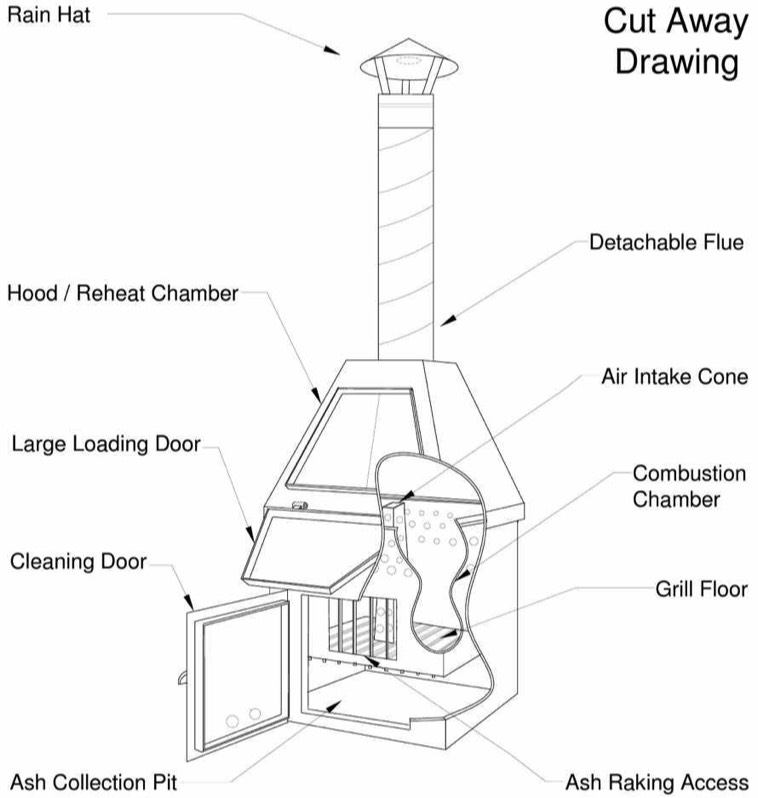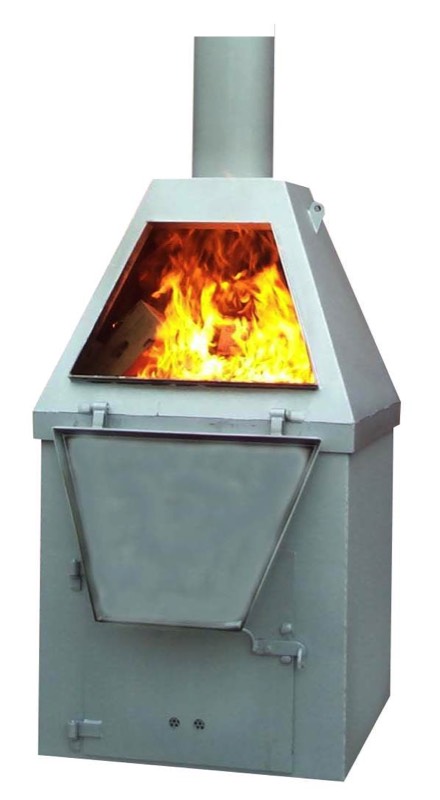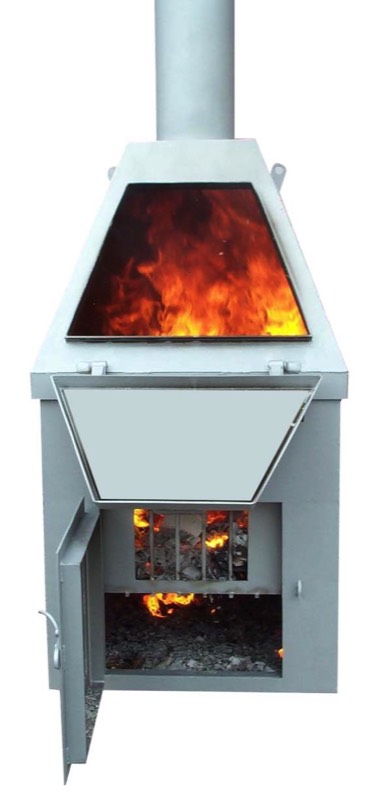HOW PROBURN INCINERATORS ORIGINAL RANGE WORK

Proburn Waste Incinerators have no moving parts and are free burning which makes for trouble free operation. Their innovative design provides fast, efficient free burning of waste. They only take a few seconds to light and can be left unattended to burn their load.
The waste is loaded and ignited manually through the top loading door. The flames are fed with primary air from the holes in the cleaning door which flows up through the grill floor and the air intake cone. Once burning has started, secondary air is drawn from the underside of the hood, which causes intense secondary combustion for the efficient destruction of the smoke and gases, making the incinerators virtually smoke free.
This reduces the original bulk by 99% into a light, sterile ash which falls through the grill floor into the ash collection pit. The ash only needs to be removed when it builds up and not after every burn. When the first load has burned down, more waste can be added. Proburn Waste Incinerators can be used as often or as little as you need.
The waste is loaded and ignited manually through the top loading door. The flames are fed with primary air from the holes in the cleaning door which flows up through the grill floor and the air intake cone. Once burning has started, secondary air is drawn from the underside of the hood, which causes intense secondary combustion for the efficient destruction of the smoke and gases, making the incinerators virtually smoke free.
This reduces the original bulk by 99% into a light, sterile ash which falls through the grill floor into the ash collection pit. The ash only needs to be removed when it builds up and not after every burn. When the first load has burned down, more waste can be added. Proburn Waste Incinerators can be used as often or as little as you need.
SECONDARY COMBUSTION
The innovative waste incinerator design ensures secondary combustion in the tapered hood. This burns the smoke and gases so the incinerator is virtually smoke free.

RUGGED CONSTRUCTION
The incinerator is made from heavy duty steel, giving many years to trouble free use. Since it has no moving parts there is nothing to go wrong!

EASY TO CLEAN ASH
The bottom door gives you easy access to clean out the ash. Ash only needs to be removed periodically since the original material burns down to only 1% of its original volume.

WASTE TYPES SUITABLE FOR INCINERATION
Our incinerators are free burning which means they don't use an external fuel source. They rely on the waste itself to be combustible which makes them great for burning many different types of waste. For example paper, cardboard, excess packaging, rags, wood off-cuts, broken pallets, floor sweepings, shavings, polythene and many others. Less combustible waste like food waste, green hedge clippings and plastics can be incinerated as long as they are mixed with more combustible waste.